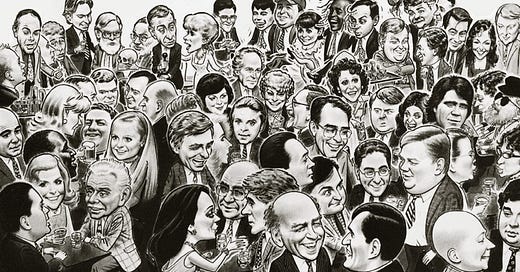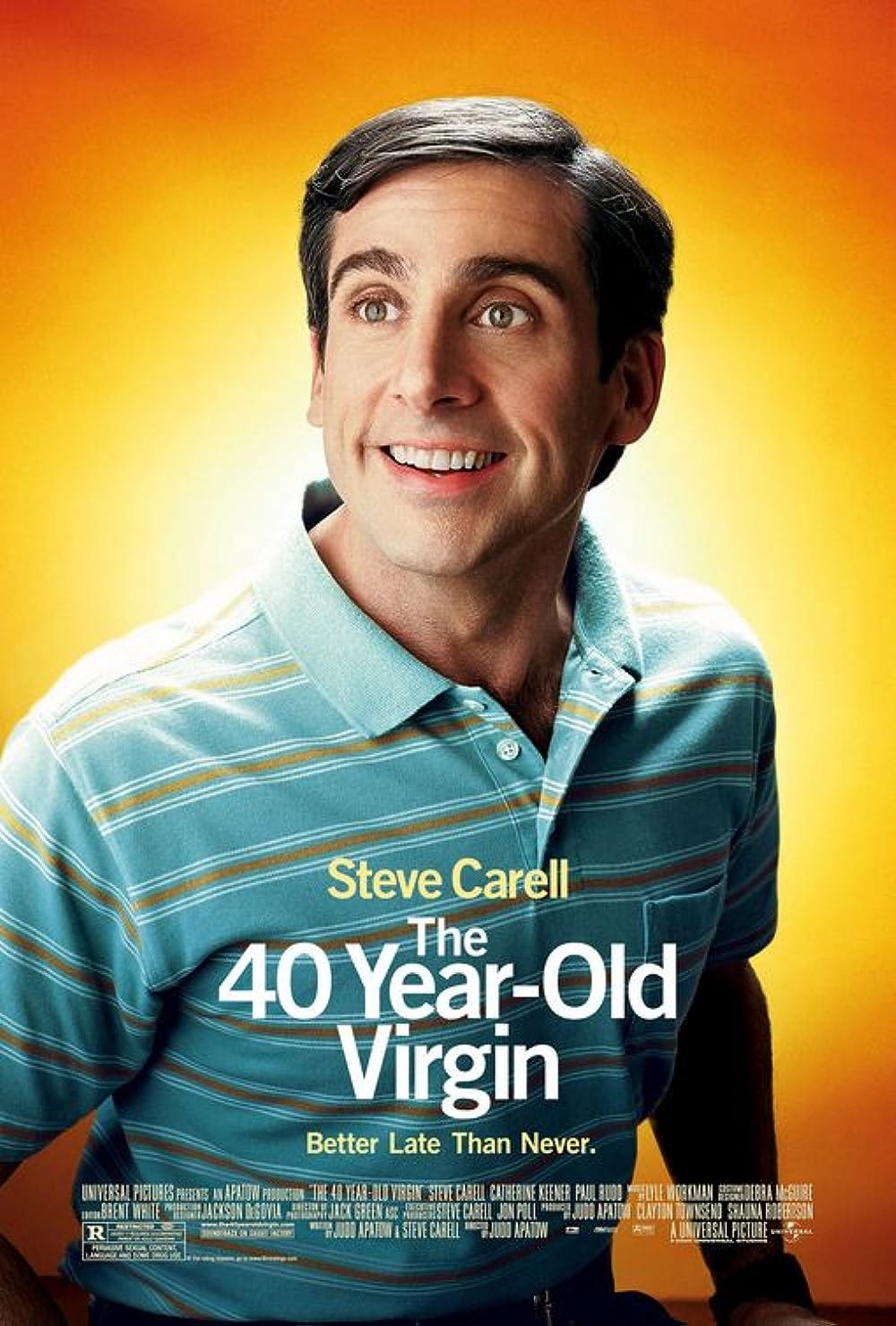I had a birthday this month. Not a major one—my current age doesn’t end in a zero—but still, one that carried some weight. I’d reached that stage in life when, without intending to, you become comfortable. You’ve been around long enough to know what you like, and structure your time accordingly. I have my places where I’m a regular. I have routines. I am content with this.
Until, during the run-up to my kinda sorta significant birthday, I realize that I’m not.
I don’t buy birthday presents for myself. For years, I never acknowledged my birthday, because I hate being the center of attention. (That’s one of the reasons I enjoy writing under a pseudonym. Rosemarie and I do the work, but it’s Renee Patrick in the spotlight.)
But this year is different. I tell Rosemarie that for my birthday, I want to feel uncomfortable. Not a lot. Just a little.
Okay, she says. How are you going to do that?
By taking an improv class, I say. Just what someone who hates being the center of attention needs.
One of my favorite books of recent years is Improv Nation: How We Made a Great American Art (2017), by Sam Wasson. Chronicling the history of improvisational comedy from its origins in social work through The Late Show with Stephen Colbert, it’s a daft experiment in capturing the uncapturable that shouldn’t work, yet miraculously does. I devour it, fascinated by the daring of performers who go out on a high wire with nothing but their trust in one another.
Wasson compares improv to jazz. “Through improvisation,” he writes, jazz musicians “made each other better. Giving themselves over to syncopation, playing, literally, off-beat—a term jazz shares with humor—they discover new beats.” Pianist Bill Evans described what musicians seek as “freedom with responsibility.” I’m intrigued by this. By the camaraderie that develops within an ensemble, allowing members to take wild chances. By the state of grace that performers find in what Wasson calls “egolessness.”
Wasson’s follow-up book is The Big Goodbye: Chinatown and the Last Years of Hollywood (2020). I interview him for Noir City magazine. I pride myself on professionalism in these situations, but on this occasion I slip and begin by raving about Improv Nation. Wasson is more than happy to discuss a subject close to his heart. Of improv, he says:
I think it’s one of the best things a person can do, because it touches all aspects. It touches psychotherapy, spirituality, community, art, politics, in all the best ways possible. It’s the closest I come to religion.
The conversation shifts to Chinatown, but keeps drifting back.
It’s so funny to talk about noir in the context of improv because I look at improv and noir as good and evil. The good and evil Americas, actually. Noir is like the bad America, and improv is the American ideal ... So as much as I love one, I love the other, because they go together.
As we wrap up the interview, Wasson says, of course you’ve done improv. I tell him no, I’ve only seen it performed. He insists that if I want to understand it, I have to get out on that high wire. Try it at least once, he says. You owe it to yourself.
I say that I will. And I don’t think about that promise again until my kinda sorta significant birthday is rumbling toward me like an eighteen-wheeler. I sign up for six weeks of classes, rereading Wasson’s book to prepare.
Class #1. I’m almost certain I’m the oldest of the eighteen people here. This does not come as a surprise. It will pose a recurring problem; in one improvisation, for instance, I refer to a paper route, and my partner has no idea what I’m talking about.
Our instructor Beth1 has us stand in a circle and introduce ourselves, but in alliterative style with an action that can be performed. (Think Dancing Dan.) I do the first thing that occurs to me: I act as if I’m being electrocuted, and say I’m Vibrating Vince.
For the next six weeks, everyone remembers my name and I remember theirs. I immediately want to know why this icebreaker isn’t standard procedure at every meeting. Arms reduction talks, union negotiations, wedding rehearsal dinners. Already this class is paying for itself.
We talk about why we’re here. Fear of public speaking is cited more than once. I’m charmed by the number of people who regularly take classes as a way of getting out and meeting others. I’m the only one here because the author of a book told them they owed it to themselves. At least, I’m the only one who admits it.
We do a few basic warm-ups, like Wordball—a word is “tossed” to you, and you respond with the first word that comes to mind, which you toss to someone else—meant to illustrate improv’s guiding principle. Say it with me: Yes, and … The idea being that you accept what your partners create and add to it. Beth emphasizes that you have to accept and add with enthusiasm. She demonstrates with another exercise. We pass a story around the circle, each person saying “Fuck, yeah!” before adding a sentence to the narrative.
I realize two things simultaneously. Because of where I’m standing, I will be the one who ends the story. And two, my writing and especially editing instincts are in the way. I’ve been in class for all of twenty minutes and both sides of my brain are screaming at each other.
Left Brain: What the fuck is happening here? This isn’t a story!
Right Brain: Chill out, dude. It’s not supposed to be a story.
Left Brain: Beth said it was! But there’s no escalation, no accrual of detail. These sentences don’t even go together. This story doesn’t make sense.
Right Brain: It’s not supposed to make sense. It’s just supposed to exist. Stop trying to fix it and let it exist.
Left Brain: Oh, fuck off. Do I tell you how to listen to music?
All while the patchwork narrative is barreling toward me.
Finally, I’m up. I say, Fuck, yeah! with great enthusiasm. And then, I got nothing!
During the break, a few students commiserate, saying it had to be tough to bring the story in for a landing. I appreciate the support, and don’t feel too bad about wiping out before a room full of strangers. I have unknowingly absorbed the core lesson of improv, as voiced by Dan Aykroyd in Wasson’s book: “how not to be afraid of flying, dying and trying.”
I fare better in the next story exercise, each yarn lasting only seven sentences. But I still fight the impulse to impose order, to have the stories make sense. I prefer the physical games, which encourage broad gestures and silliness. I sweat through my T-shirt in a combination of nervousness, exertion, and being in an unventilated room in a building without air conditioning.
Rosemarie asks how the class went. I say that it was interesting but not fun, and that if I’m being honest, I’m not sure I want to go back. Then I remind myself: you wanted to be uncomfortable. Happy birthday.
I’m harboring a secret. One that makes me feel like a spy in the house of love.
I basically … don’t like improv?
What draws me to Wasson’s book is its focus on process, not results. Improv’s ephemeral nature—you literally have to be there—is its point. I want firsthand experience of a collective creating on the fly.
But the improv I’ve seen I haven’t particularly enjoyed. Admittedly, I haven’t watched the best troupes. No Second City or Upright Citizens Brigade, mainly a lot of enthusiastic college kids, which should indicate how long ago it was. And even seasoned improv performers will admit that a lot has to gel for a show to take flight.
Most of the improv I encounter is in film, and I find it hit-or-miss. The movies that rely on it often seem strangely airless, and I didn’t understand why until I read a 2015 New York Times article on how they’re edited. Combining a line from take 16, a reaction from take 4, and a zinger from take 9 registers almost as a betrayal.
Yes, I understand that cinema is editing and I’m constantly watching things that didn’t happen. I fully comprehend that this character didn’t really die, and that couple did not in fact break up, and that one building was not seized by a band of high-tech thieves masquerading as terrorists. I get it. But transforming what are meant to be organic moments into a mosaic feels different.
When it succeeds, it can be dazzling. A new book by Saul Austerlitz details Adam McKay’s technique on Anchorman: The Legend of Ron Burgundy (2004), which Austerlitz dubs “the most iconic comedy of the 21st century.” I’d bestow that title on another improv-driven film with Steve Carell, The 40-Year-Old Virgin (2005). It’s humanistic, hysterical, and based on a sketch Carell developed at Second City.
For all my curiosity, I’m approaching improv with a degree of skepticism. Taking the class isn’t like me as a lapsed Catholic returning to mass. It’s more like I’m pounding on the rectory door in the dead of night, then telling the bewildered priest that I should do the homily.
Coming soon: the thrilling conclusion. But first I’ll need a location, the name of a popular novel, and something you might accidentally ingest.
All names improvised.






Go back, Vince. I think you'll regret it if you don't. Congratulations on a successful (whether you think so or not) first day.